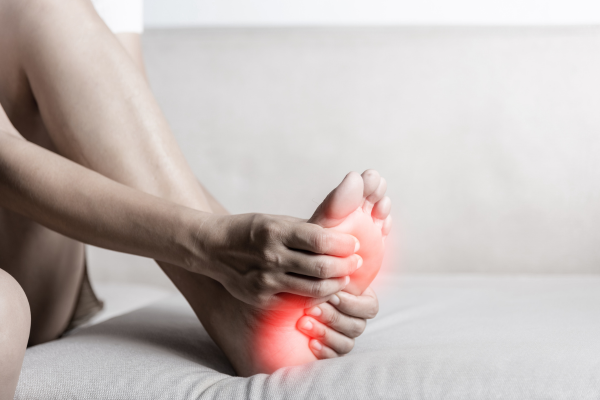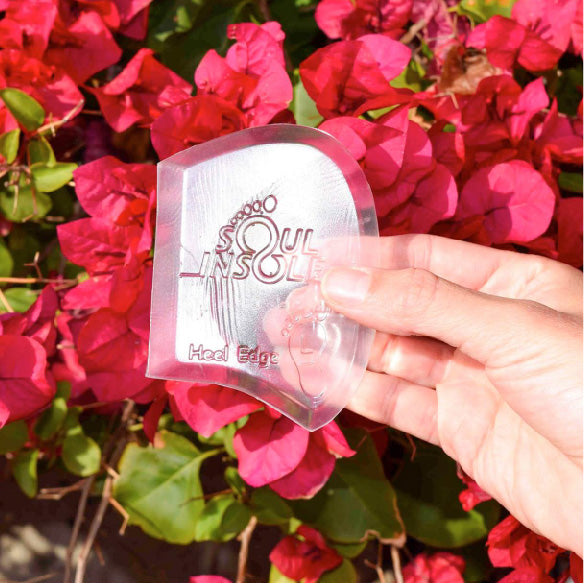
Keys to Understanding Plantar Fasciitis: Causes, Symptoms, and Potential Treatments
As a company that makes footcare products, we hear about a wide range of ailments from our customers. One of the most prevalent and common conditions that customers write to us about is plantar fasciitis and foot pain associated with that condition.
Plantar fasciitis is a very common yet often misunderstood condition that affects the feet and can cause pain and discomfort.
Whether you're an athlete, a busy professional, or just someone who enjoys staying active, plantar fasciitis can significantly impact your day-to-day life. In this blog post, we'll delve into the details of plantar fasciitis. We’ll define what plantar fasciitis is, explore what causes it and teach you how to notice symptoms. Lastly, we’ll summarize a few potential ways to treat plantar fasciitis and help you find relief from foot pain and get back on your feet.
What is Plantar Fasciitis?
Plantar fasciitis is inflammation of the plantar fascia, a thick band of tissue that connects the heel bone (calcaneus) to the toes and supports the arch of the foot. The plantar fascia serves as a shock absorber and helps to maintain the foot’s structural integrity. When this tissue becomes inflamed or irritated, it leads to the condition known as plantar fasciitis.
Possible Causes of Plantar Fasciitis
- Repetitive Strain: Activities that involve repeated stress on the feet, such as running, jumping, or standing for extended periods, can strain the plantar fascia and lead to micro-tears, causing inflammation.
- Improper Footwear: Wearing shoes with inadequate arch support, poor cushioning, or insufficient shock absorption can increase the risk of developing plantar fasciitis. Psst… this is one way Soul Insole products can help!
- Biomechanics: Flat feet, high arches, or abnormal/imbalanced walking patterns can alter the distribution of weight on the feet and lead to excessive strain on the plantar fascia. These types of imbalances can affect more than just your feet - when your gait or posture is off, it can lead to increased strain throughout the body, often showing up as low back pain symptoms that develop gradually over time. Poor foot alignment can disrupt the way your body absorbs shock and maintains balance, which in turn places added stress on the lower back and other joints.
- Age: Plantar fasciitis is more common in individuals aged 40+ due to the natural aging process, which can cause the plantar fascia to lose elasticity, become more brittle, and become more susceptible to injury.
- Obesity: Excess body weight places additional stress on the feet, increasing the likelihood of inflammation in the plantar fascia.
- An Incident of Impact/Shock: Landing from a jump, lifting something heavy, or stepping down hard in the wrong way can cause micro-tears in the plantar fascia.
Now let’s get into some signs and symptoms you can look out for to catch plantar fasciitis before it gets worse!
The hallmark symptom of plantar fasciitis is heel pain, often described as sharp and stabbing. This pain is typically most pronounced after periods of rest, such as getting out of bed in the morning or standing up after sitting for a while. As the foot warms up and becomes more active, the pain may decrease, only to return after prolonged activity.
Other symptoms may include:
- Stiffness: Stiffness and limited mobility in the affected foot, especially during the initial steps after periods of rest.
- Tenderness: The affected area of the heel may feel tender to touch.
- Radiating Pain: Pain can sometimes radiate along the bottom of the foot towards the toes.
Treatment Options
Thankfully, there are numerous effective treatment options available to manage plantar fasciitis and alleviate the associated discomfort. It's essential to consult a healthcare professional for proper diagnosis and guidance before beginning any treatment regimen. Here are some common approaches:
- Rest, Ice, Warmth: Resting the affected foot and applying ice to the heel can help reduce foot pain and provide relief. Some people also respond well to warmth - like an epsom salt foot bath.
- Stretching Exercises: Gentle stretching exercises for the calf muscles and plantar fascia can improve flexibility and reduce tension and plantar fasciitis pain. This is also a great thing to incorporate into your daily routine to help prevent the onset of plantar fasciitis too. We love when people take proactive measures to support their health!
- Orthotics and Insoles: Custom or over-the-counter orthotic shoe inserts can provide better arch support and cushioning, helping to alleviate strain on the plantar fascia. We offer a variety of supportive products here at Soul Insole that might help!
- Footwear: Wearing shoes with proper arch support and cushioning is crucial to preventing and managing plantar fasciitis. Avoid flat shoes and high heels. If you need to wear flats or heels you can add Soul Insole’s adhesive gel arch supports to provide a bit more comfort and cushion.
- Physical Therapy: For more severe cases, a physical therapist can provide targeted exercises to strengthen the foot muscles, improve flexibility, and correct gait abnormalities. Another great way to be proactive about your foot health is to do exercises that strengthen your feet and improve gait before foot pain arises.
- Talk to your Doctor: In severe or chronic cases medications might be provided to manage pain and inflammation. Occasionally, doctors will suggest corticosteroid injections or shockwave therapies to help reduce pain and inflammation or to stimulate healing. As a last resort, surgery can be considered if the patient hasn’t responded to other less invasive options. Plantar fasciitis surgery often involves releasing tension on the plantar fascia or removing damaged tissue.
Preventing Plantar Fasciitis
Prevention is key when it comes to plantar fasciitis. Like we mentioned before, we love when people take care of their health proactively. Even if you don’t have plantar fasciitis here are some good things you can do to help assure healthy feet as you age.
- Wear shoes that provide adequate arch support, cushioning, and shock absorption. It helps to wear shoes with a wider toe-box so that the toes can rest in a more natural position.
- Incorporate regular stretching into your routine, especially before and after exercise.
- Avoid sudden increases in physical activity levels to give your feet time to adjust. Take it slow if you start up a new stretching or strengthening routine and don’t hesitate to ask a physical therapist or other professional for help with where to start!
- Maintaining a healthy weight can reduce stress on your feet and lower your risk of developing plantar fasciitis.
- Listen to your body and don’t ignore pain or discomfort! If you experience foot pain, give your feet adequate rest and then seek medical attention if the pain persists.
To wrap up….
Plantar fasciitis can be a challenging condition to deal with, but with the right approach, it's possible to find relief from foot pain and get back to enjoying your daily activities. Remember that early intervention and proper management are essential for a successful recovery. By understanding the causes, recognizing the symptoms, and following recommended treatment options, you can take steps towards healing your feet and preventing future occurrences of plantar fasciitis.
If you're experiencing persistent heel pain, don't hesitate to consult a healthcare professional for personalized guidance and care.
If you want to take care of your feet and incorporate footcare products like gel insoles or arch supports, reach out to us at info@soulinsole.com and we can help recommend products that might be helpful and ease your foot pain!



